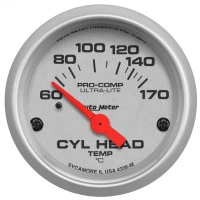Camshaft
A camshaft is a key component of an internal combustion engine along with a crankshaft, pistons etc. Designed to live a lifetime, your vehicle’s camshaft should never be a root of any engine problem. However, if it happens, it may cost you major engine issues and a lot of money to fix them.
What is a typical camshaft?
As its name says, a typical camshaft is a cylindrical shaft with special cams on it located at measured intervals along the shaft. The cams protrude from its surface and correspond to the positions of intake and exhaust valves of the engine. Each cam opens or closes a specified valve to allow the fuel-air mixture to enter the combustion chamber and exhaust gases to leave it.
By design, a camshaft is a valve lifter engineered to open and close a required valve at the right moment of time. Its movements are coordinated with the movements of pistons and ignition sparks by means of a timing belt or chain driven by a crankshaft that is spun by pistons.
When the whole system is well balanced the engine operates smoothly and replies to you with the exact amount of power you need once you push down the accelerator pedal.
While a common engine comes equipped with one or two camshafts, you may also find engines with three and even four camshafts. Some of them are multifunctional and operate both intake and exhaust valves, when the others lift only one type of valves. As a rule, a camshaft is made of iron, but there are also high-performance versions fabricated from billet steel to ensure superior strength and durability. Located inside a cylinder head a camshaft spins in bearings and is lubricated with oil to prevent collecting of excess heat.
Symptoms of a failing camshaft
A camshaft is a crucial component of any internal-combustion engine, so any malfunction will be noticeable once it appears. Let’s check out the most common of them:
- Popping and/or backfiring
- Misfiring at low and high RPMs
- Knocking noise from the valves
There are a couple of things that can make your camshaft fail, such as bad bearings, worn lifters or lobes. It can also get broken itself because of a manufacturing defect. No matter the reason, a failed camshaft will lead to serious problems, including failure to the crankshaft, cylinder head and block, pistons and connecting rods, intake and exhaust valves.
Once you notice any issues mentioned above, don’t try your luck and stop the car. Call your mechanic and have your vehicle towed for repair.
Can I fix a failed camshaft?
The best way is to let a professional mechanic do the job, of course, unless you’re one of them. It must be thoroughly inspected to find out what caused its failure and whether any other engine parts were damaged. There are a couple of possible scenarios:
No other parts are damaged. Depending on the damage of the camshaft your options may be the following:
- replacing a camshaft with a brand-new one
- remanufacturing or replacing with a remanufactured camshaft
The first option is the most expensive one. A remanufactured camshaft is less expensive, while having your own camshaft remanufactured is the cheapest option, since it is used as a core.
Not all camshafts can be repaired because it must be straight and doesn’t have excessive wear. It is usually remanufactured through welding by adding new metal to worn areas, and then regrinding to meet the original shape. This is also a good idea to replace your timing belt and oil seals.
Both the camshaft and bearings are damaged. In this case the camshaft and bearings must be replaced, but keep in mind that most bearings cannot be remanufactured. When installing new bearings on your brand-new or remanufactured camshaft make sure they are properly fitted and all oil passages are lined up perfectly.
Not only the camshaft and bearing, but also, the top end of the motor are damaged. This is the worst scenario that may happen. It means that some other moving parts such as valves, connecting rods and pistons can be maimed in addition to the camshaft and bearings. There is a big chance that your cylinder head and cylinders are seriously damaged as well. If your car is relatively new and expensive consider replacing its engine with a new one, otherwise it may be its last stop in life.


